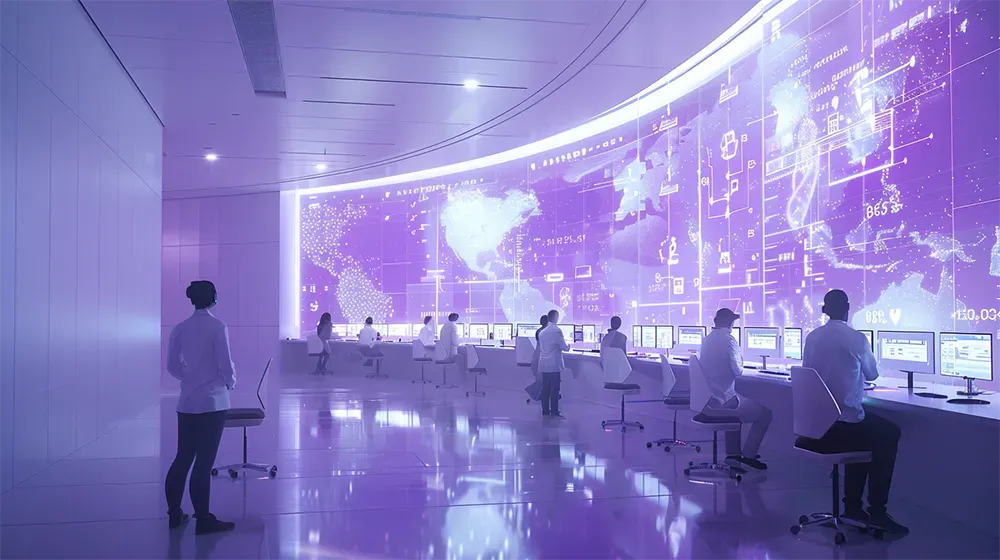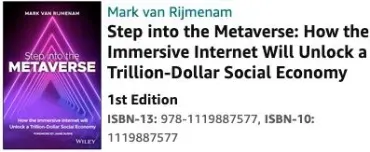The Secret Weapon of Top Futurists? It’s Not AI. It’s Imagination

To thrive amidst exponential change, individuals and organizations must learn to anticipate, interpret, and act on the signals shaping tomorrow, a practice called Futures Thinking. The seeds of tomorrow often exist as faint signals today, visible only to those who are actively looking.
Consider how obscure academic papers on neural networks in the 1980s quietly laid the foundation for the rise of deep learning decades later or how early blogs about sharing music files hinted at the digital content revolution. These signals, be they technological breakthroughs, shifts in consumer values, or emerging cultural norms, are the breadcrumbs that lead us to future possibilities. Futures thinking is an important steppingstone for dealing with the tsunami of change.
Detecting and interpreting these signals is a cornerstone of futures thinking. As a futurist, I have dedicated my career to scanning across domains such as artificial intelligence, neuroscience, genomics, spatial computing, and material science. At the same time, I closely observe societal trends and cultural shifts that influence how these technologies are adopted. Individually, these signals may seem inconsequential, but together, they reveal patterns that point to transformative changes on the horizon.
The Power of Imagination

The practice of sensing signals is not reserved for experts; it is a skill anyone can develop. It begins with curiosity and a willingness to explore the fringes of current knowledge. By observing weak signals and connecting them to broader trends, we can start to glimpse the contours of what lies ahead. But sensing signals is just the beginning; it is the first step in the broader practice of futures thinking.
Futures thinking is about more than just predicting one inevitable outcome; it is about exploring a spectrum of possibilities and shaping our desired trajectory. Unlike traditional forecasting, which extrapolates from existing trends, futures thinking combines imagination with strategic foresight. It embraces complexity, challenges conventional wisdom, and envisions multiple scenarios; some plausible, others improbable.
At its core, futures thinking recognizes that the future is not a fixed destination, but a landscape of possibilities shaped by today's decisions. By examining these possibilities, individuals and organizations can anticipate challenges, seize opportunities, and build resilience in the face of uncertainty.
Resilience in a rapidly changing world isn't about merely weathering disruptions; it is about transforming unpredictability into opportunity. Futures thinking equips you with tools such as scenario planning, predictive analytics, and speculative design to prepare for a range of potential outcomes. Predictive analytics, for example, can help supply chains anticipate bottlenecks, while scenario planning enables leaders to explore how emerging technologies might disrupt their industries.
Blending Data-Driven Insights with Human Intuition

The real power of these tools lies in their ability to blend data-driven insights with human intuition. Futures thinking operates on the principle of using data to sense signals, interpret trends, and envision scenarios that reveal what lies ahead. This ability to anticipate change and act accordingly distinguishes the prepared from the overwhelmed.
By combining the precision of analytics with the creativity of strategic foresight, organizations can craft dynamic approaches to uncertainty. Resilient organizations also prioritize ethics and accountability, embedding fairness into their systems to build trust and long-term success. This foundation of resilience ensures that challenges are not just endured but leveraged as opportunities for equitable growth.
Most importantly, futures thinking is a mindset that encourages every individual and every level of an organization to challenge assumptions, push creative boundaries, and see opportunities where others see challenges and uncertainty. By fostering this culture, organizations can empower their teams to turn potential threats into innovative solutions. Consider how scenario planning, paired with speculative design, allows organizations to simulate future challenges and develop proactive strategies. These exercises inspire creative problem-solving and enable teams to anticipate ripple effects, ensuring they remain agile in a rapidly evolving landscape.
For example, businesses grappling with disruptive technologies like AI can use futures thinking to anticipate both risks and rewards. By envisioning how automation might reshape their workforce, they can invest in upskilling programs that prepare employees for new roles, ensuring that technological progress drives inclusive growth.
The Role of Science Fiction in Business

Speculative fiction, or science fiction, is one of the most unexpected yet effective tools in futures thinking. This genre has long explored the societal implications of emerging technologies, offering vivid narratives that blend imagination with practical foresight. Science fiction authors have the capability to explore complex technologies, extrapolate them, and weave them into their stories, revealing the intricate interplay of innovation and society.
As a result, speculative fiction should be seen as more than escapism; it is a framework for exploring "what if" scenarios. By examining how characters respond to crises, organizations can glean insights into resilience and adaptability and explore what the future might bring. This is why I interview science fiction writers in my Synthetic Minds Podcast.
As the famous historian Yuval Noah Harari observed in his books, humanity has always grappled with the uncertainty of the future, but today, that challenge is amplified to unprecedented levels. Harari argues that the rise of transformative technologies capable of engineering our bodies, brains, and even minds erodes the foundation of what we once believed to be fixed and eternal. In this context, the unpredictability of what the world will look like two, three, five years from now, or even in 2050 becomes a central dilemma. Our inability to foresee how advancements will reshape the human experience makes envisioning the future more complex than at any other time in history.
However, by incorporating speculative fiction into strategic dialogues, businesses can engage teams in imaginative discussions about the potential impacts of their decisions, something that is crucial in a world that changes so fast and where predicting the future becomes increasingly difficult. These exercises foster a culture of innovation and critical thinking, encouraging organizations to explore the limits of what’s possible and ethical.
The Future We Build Together

In a world overwhelmed by change, I believe that the future shouldn’t be something that happens to us, it is something we build together. This mindset is at the heart of futures thinking, and it is one of the central themes of this book. We are all architects of tomorrow. However, this process requires balancing innovation with responsibility.
As we navigate exponential change, our choices today will shape tomorrow's societies. Balancing technological advancement with ethical accountability ensures that progress benefits all stakeholders. Instead of ditching Diversity, Equity, and Inclusion programs to create a more masculine organization, we should create systems that are innovative, sustainable and inclusive.
This approach demands more than technological expertise; it requires a commitment to foresight, adaptability, and collaboration. It also calls for imagination, strategy, and a willingness to engage with complexity. Futures thinking is about exploring a spectrum of possibilities and equipping ourselves to thrive within them instead of predicting a singular future. By embracing futures thinking, we can turn disruption into opportunity, ensuring that the exponential forces reshaping our world lead to shared prosperity.
The Power of Futures Thinking

The true power of futures thinking lies in its practical applications. It drives innovation and resilience in business, enabling companies to adapt to disruption and seize emerging opportunities. For policymakers, it provides a framework to anticipate the long-term impacts of decisions, ensuring they create sustainable and equitable outcomes. For individuals, it offers a compass for navigating career choices, education, and personal growth in a rapidly changing world.
Futures thinking isn't confined to the boardroom or government offices. It thrives in open conversations, collaborative workshops, and everyday reflections. By fostering curiosity and creativity, you can uncover new possibilities, challenge conventional thinking, and build a shared vision for the future.
The accelerating pace of change demands a new way of thinking. One that looks beyond the immediate horizon to anticipate, adapt, and shape the future. Futures thinking isn’t just a methodology; it is a mindset. It empowers us to turn signals into strategies, uncertainty into innovation, and disruption into growth. Futures thinking provides the tools; the rest is up to us.





